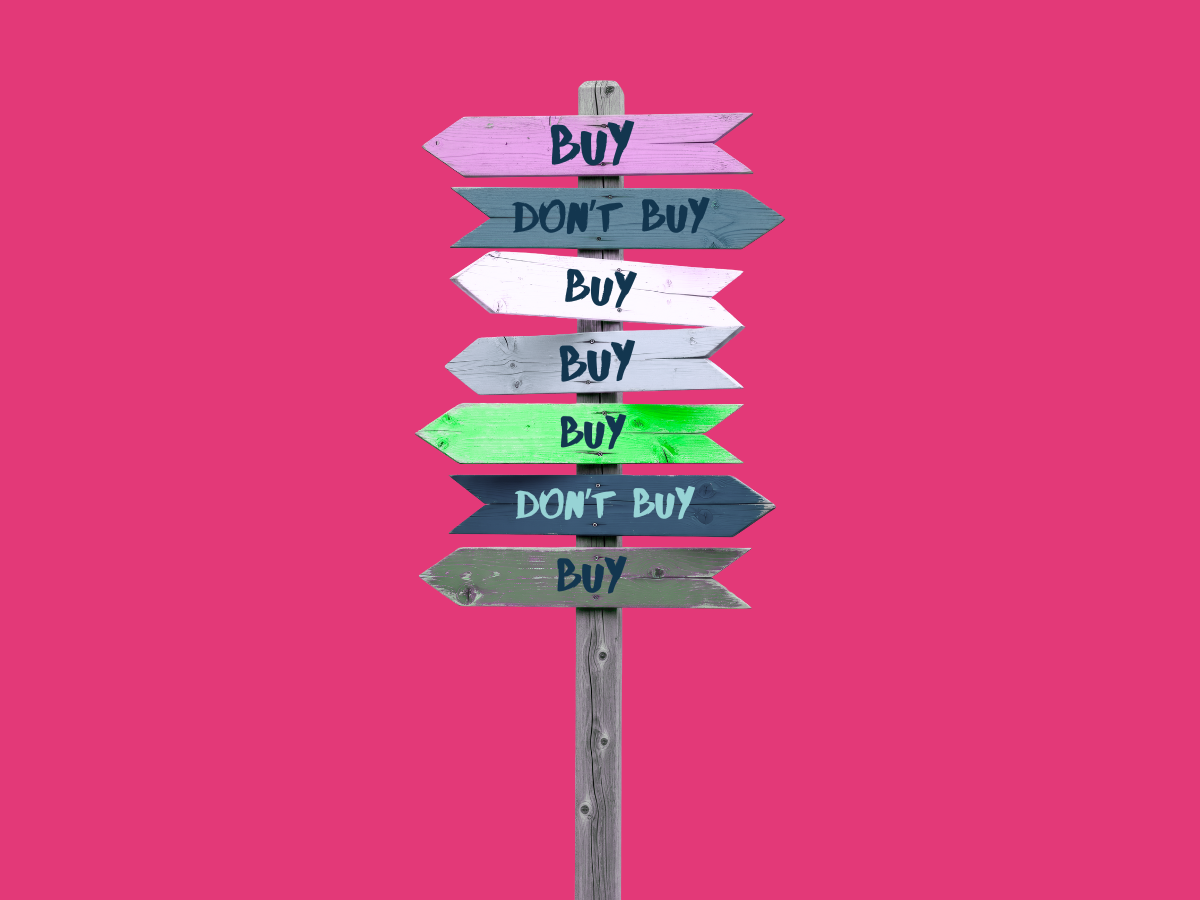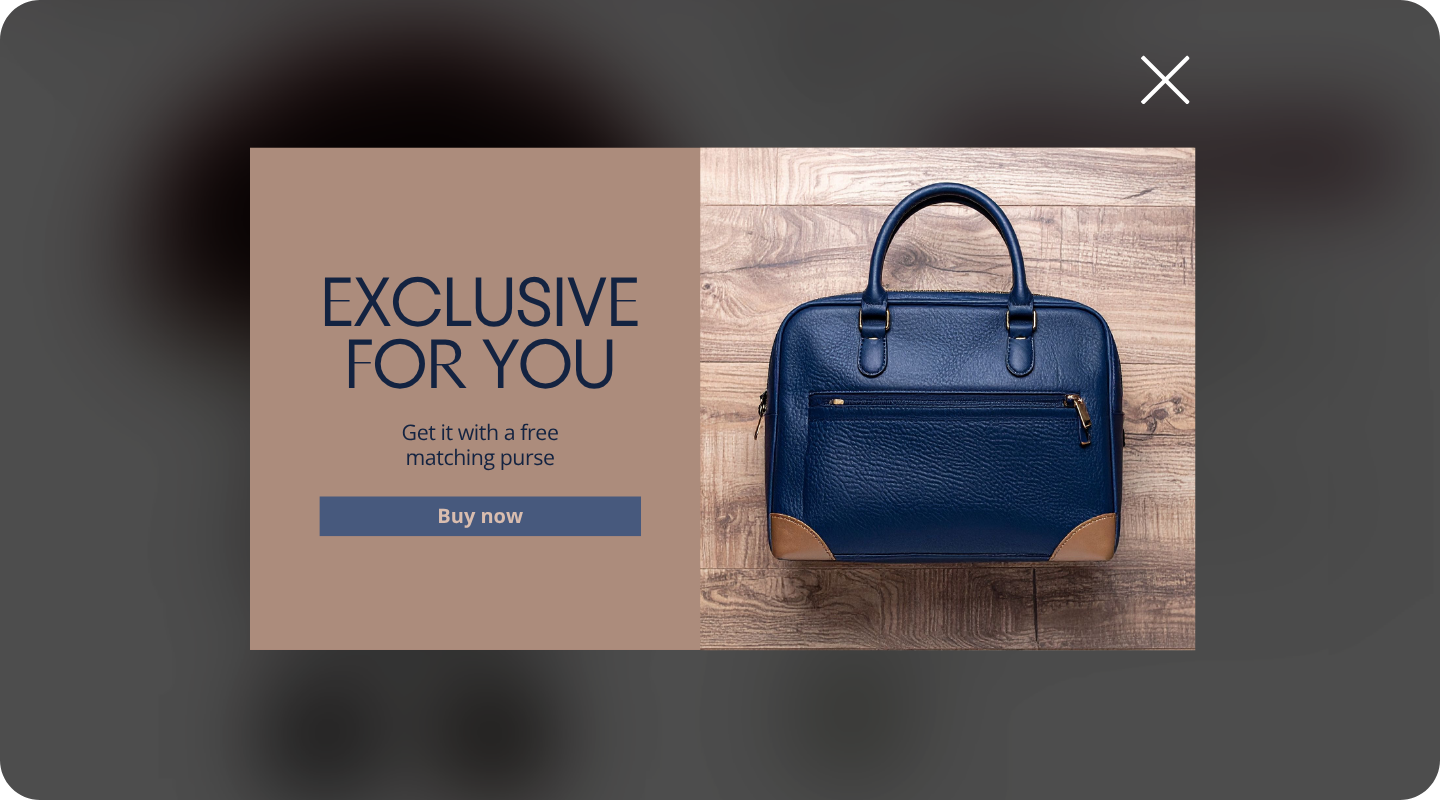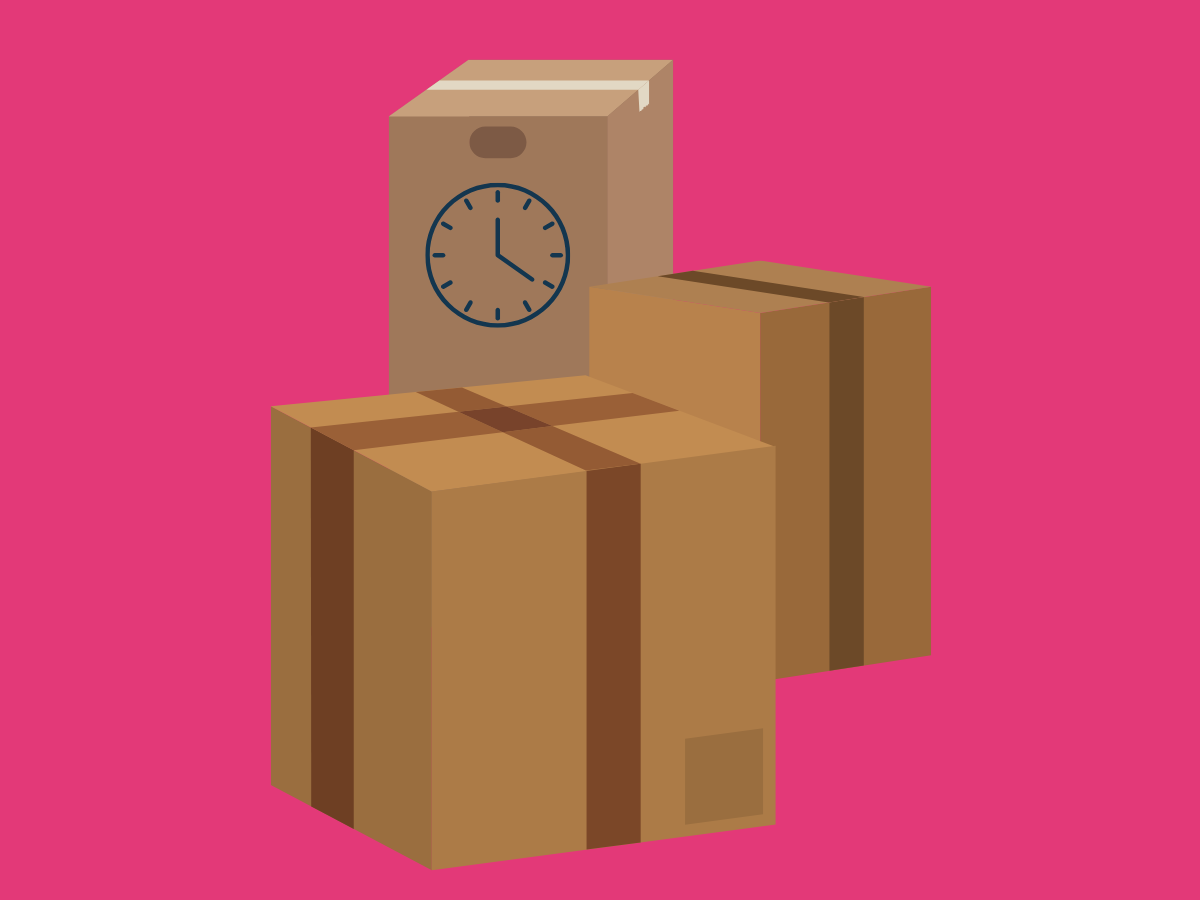Advanced intent strategies that increase profit

You've got the basics down.
You're no longer offering discounts to everyone. You're reading intent signals. You're treating high-intent visitors differently from browsers.
Good. That's working.
Now let's go deeper because intent targeting isn't just about converting more visitors. It's about making more profit from each one.
Product-level intent targeting
Most retailers stop at visitor-level intent. High, medium, or low.
However, different products attract varying levels of intent, even from the same visitor.
Someone might show high intent for a £30 phone case but low intent for a £800 phone. They're ready to buy the accessory, but are just researching the main product.
Your promotion strategy should align with the product, not just the individual.
High-demand products with healthy margins don't need discounts. Ever. Show availability, delivery speed, and reviews. Let scarcity do the work. If the stock is running low, let people know.
Mid-range products with competition need differentiation, not discounts. Show why yours is better. Comparison charts, detailed specifications, customer photos. When visitors can see the value difference, they don't need a price incentive.
Slow-moving products are where smart discounting pays off. However, only for visitors who show an interest in that category. Someone browsing winter coats in January is perfect for clearing last season's stock. Someone looking at summer dresses isn't.
Example: A visitor adds a £400 camera to their cart (high intent, high value). Your system tries to cross-sell a £30 memory card (low intent, low value) and a £120 camera bag (medium intent, medium value). Different approaches for each: Show the memory card as "frequently bought together" with no discount. Display the bag with customer reviews that highlight its durability. Save your promotion budget for products that need it.
Track which products convert at which intent levels. You'll find patterns. Some products only sell to high-intent visitors. Others convert browsers easily. Adjust your targeting accordingly.
Using intent data to clear slow-moving stock
Dead stock kills profit faster than anything.
The traditional approach is to discount everything. Put it on your sale page. Send an email blast. Hope someone bites.
That's expensive. You're training all your customers to wait for sales while burning margin on inventory that could be moved more strategically.
Better approach: Match slow stock to relevant high-intent visitors.
Someone showing high intent in "men's trainers" gets shown your slow-moving trainer stock, not your bestsellers. They're ready to buy trainers anyway. Give them options that help you clear inventory.
Someone browsing "summer dresses" casually (with low intent) sees your current season's bestsellers. Build desire for full-price items. Save the clearance stock for visitors who are actually ready to buy dresses.
According to research from the IHL Group, retailers lose $1.73 trillion globally due to overstocking and out-of-stock issues. Most of that overstock could move faster with better targeting.
Seasonal timing matters too. January visitors searching "winter coat" are probably looking for deals. They know it's end-of-season. Show them last season's stock at modest discounts. You'll move inventory without the 70%-off desperation sales that destroy brand perception.
Example: You have 200 units of a blue handbag that's not selling. Instead of a site-wide promotion, show it to high-intent visitors who've viewed handbags in similar styles or colors. Offer free personalization or upgraded packaging instead of a discount. Position it as exclusive rather than clearance. You'll move stock while protecting margins and brand value.

Combining intent with seasonality and inventory
Intent doesn't exist in a vacuum.
A high-intent visitor in November behaves differently from a high-intent visitor in January. Your inventory levels in December matter more than in February.
Peak seasons (Black Friday, Christmas, Valentine's Day) bring artificially high intent. Everyone's shopping. But they're also comparing prices across dozens of sites.
This is when friction removal matters most. Don't compete on price alone—you'll lose to someone bigger. Compete on convenience. Next-day delivery. Easy returns. Gift wrapping. Customer service availability.
According to RetailX, 56% of UK shoppers expect free shipping during busy shopping periods, making it more important than a discount percentage.
The off-season is when you can be more aggressive with discounts because you're competing with vacation plans and home repairs, rather than other retailers. But still targeted by intent. Off-season high-intent visitors are gold. They're shopping when nobody else is because they actually need what you sell.
Inventory pressure changes everything. When you're overstocked, you can afford to discount for medium-intent visitors. When you're low on stock, restrict promotions to cart abandoners only. Let natural demand work for you.
Example: It's mid-December and you're low on stock of your bestselling toy. High-intent visitors see "Only 3 left" messaging with no discount. Medium-intent visitors see it too, building urgency. You stop all promotional emails featuring that product. It sells out at full price by December 18th. Meanwhile, your overstocked board games get promoted to high-intent visitors in the "family games" category with modest bundle offers.
Cross-sell and upsell based on intent
Most cross-sell attempts fail because they ignore intent.
Someone adds a £25 t-shirt to the cart, and you recommend a £200 jacket. That's not reading the room. They showed intent for low-price basics, not premium outerwear.
Match the intent level and price point of the original item.
High-intent, high-value cart? Suggest premium accessories or upgrades. They're already spending. Make it easy to spend a bit more on quality.
High-intent, low-value cart? Suggest practical add-ons at similar price points. Someone buying a £30 phone case might add a £15 screen protector. They won't add a £100 wireless charger.
Medium-intent browsing? Show complementary products as inspiration, not hard sells. "People who bought this also loved..." Build the story of what they could create, rather than just pushing products.
Timing matters for cross-sells. Show them during the shopping journey (on product pages, in cart), not just at checkout. By the time they reach checkout, high-intent visitors are focused on completing the purchase. Don't distract them.
Example: A visitor adds a £150 yoga mat to their cart (high intent, premium product). Show them premium yoga blocks and straps in the £30-50 range. They've already signaled they value quality. A visitor adds a £20 basic yoga mat. Show them a basic block for £10 and a beginner's guide. They're price-conscious. Read the signal.
Intent-based email capture strategies
Not everyone who visits will make a purchase during this visit.
The question is: how do you capture them without burning margin?
High-intent visitors who don't convert are your most valuable captures. They were close. Something stopped them. Capture their email with value, not discounts.
"Get price drop alerts" works because they're interested in this specific product. "Save your cart" works because they've invested time. "Get restock notifications" works when you're out of their size.
Medium-intent visitors need information, not incentives. "Download our buying guide" or "Get our gift finder" captures them while acknowledging they're still researching. You're helping, not selling.
Low-intent visitors are often drawn to entertainment or inspiration. "Join our community for weekly styling tips" works better than "Get 10% off." They're not ready to buy, but they might enjoy your content.
The key is what you do after capture. High-intent captures get cart reminder emails within hours. Medium-intent captures get educational content over days. Low-intent captures go into long-term nurture campaigns.
Example: A visitor views your £500 winter coat three times but doesn't buy. Your exit pop-up says "Want to know when this goes on sale?" instead of "Take 10% off now." You capture their email and send a personalised alert when you actually offer a discount on that coat. They buy at 15% off instead of you giving 20% to everyone. You've saved a 5% margin while increasing conversion.
Measuring success beyond conversion rate
The conversion rate indicates whether people are making a purchase. It doesn't tell you if you're making money.
Margin per order matters more than conversion rate. Would you rather convert 5% of visitors at a 40% margin or 7% at a 20% margin? The second scenario brings more orders but less profit.
Track margin by intent level. If your high-intent conversions have 35% margins but your low-intent conversions have 15% margins, you're attracting the wrong traffic or over-discounting the wrong people.
Customer lifetime value shows whether your intent strategy is building a sustainable business. Customers acquired through targeted interventions are likely to be more loyal than those acquired through blanket discounts.
Intent-based strategies should improve retention because you're attracting the right customers, not just any customers.
Inventory turn rate improves when you're promoting the right products to the right people. Measure how quickly stock moves before and after implementing intent-based targeting.
Promotion efficiency is critical. If this ratio increases, your intent strategy is working even if the conversion rate stays flat.

Other metrics worth tracking: Return rate by intent level (are you attracting quality purchases?), support tickets per order (are you creating confusion?), and repeat purchase rate (are you building loyalty?).
Example: Before intent targeting, your conversion rate was 3.2% with an average margin of 28%. After six months of intent-based promotions, the conversion rate is 3.4% but the average margin is 34%. Revenue is up 8% but profit is up 25%. That's success, even though conversion barely moved.
What to do when intent signals conflict
Sometimes the signals don't agree.
A visitor shows high intent (viewed the product 3 times, read reviews, and added it to the cart) but then abandons and browses unrelated categories. Are they still high intent? Or did they change their mind?
Follow the most recent behavior. Intent changes. Someone can transition from being ready to buy to just browsing in a matter of minutes. Your system needs to recognize that shift.
Time decay matters. A high-intent session from yesterday is less relevant than medium-intent behavior today. Weight recent actions more heavily.
Context helps resolve conflicts. If someone shows high intent on mobile but low intent on desktop, they may be researching on mobile for a later desktop purchase. Don't treat them as low intent. Capture their email instead.
When in doubt, be conservative with discounts. If signals are mixed, default to the non-discount intervention. Display reviews, offer assistance, and provide relevant information. You can constantly offer a discount later. You can't take one back.
Price comparison behaviour (checking multiple similar products) is not indicative of low intent. It's high intent that needs convincing. Show comparison charts and differentiation, not discounts.
Example: A visitor spends 8 minutes reviewing your £180 coffee grinder (high intent), adds to cart, then abandons and browses coffee beans (medium intent for a different category). Don't offer a discount on the grinder immediately. Send a cart reminder showing the grinder with complementary coffee beans. "Complete your coffee setup." You've acknowledged both interests and created a natural upsell opportunity.

Making it work
Advanced intent strategies sound complicated. They don't have to be.
Start with one tactic. Product-level targeting, or inventory-based promotions, or intent-based email capture. Get that working. Then add another.
You don't need perfect data or expensive tools. You need clear rules and consistent testing.
The businesses making this work aren't doing everything at once. They're doing a few things well. They're measuring what matters (profit, not just conversion). They're adjusting based on results, not assumptions.
Most importantly, they've stopped treating all visitors the same. Once you make that mental shift, everything else follows.
Your visitors are different. Your products are different. Your promotions should be too.






